How to Reorganize Your Garage
Men’s Journal aims to feature only the best products and services. If you buy something via one of our links, we may earn a commission.
A garage organization project isn't for the weary. Luckily, in the spring we're most motivated to get things back in order after a long winter. After months of haphazardly piling tools, holiday decorations, and other seasonal items, it may be an understatement to say that your garage is in serious need of cleanup. Before you spin out and lose steam, come up with a good plan. Success comes with focus, so we're honing in on the tips and tricks that'll help you the most. Go ahead, give it a scan, make a plan, and take back your garage so it's functional all summer.
1. Assess the Space
Identify clutter. Oof, what happened in there? Take stock of items that have collected in the garage, noting areas of clutter, piles of stuff that don't belong, and items or boxes that need organizing. Plan for organization, while you're at it. Don't start moving stuff quite yet, but make a list of items to keep, donate, recycle, or discard to streamline the re-organization process.
Check for damage. Winter is tough in many parts of the country. Check for any damage caused by winter weather, such as water leaks or pest infestations.
Do you need a better layout? This is a good time to consider how you want to use the space, whether it be for camping gear, gardening tools, or lots of bins of plastic containers. Plan a layout that maximizes functionality and organization.
2. Declutter
Sort methodically. Work your way around the space, slowly sorting the items you identified into different piles: keep, donate, recycle, or discard. Keeping your focus in one area at a time prevents a mega distraction.
Dispose of hazardous materials responsibly. Properly dispose of or recycle items that are no longer needed, including hazardous materials like paint or chemicals.
Clear out unused items. Donate what you can! Or, post it to your local free groups in the community. Gardening supplies, outdoor gear, and older power tools can usually get more use from a new owner.
Related: What’s the Best Way to Organize Your Outdoor Space?
3. Clean, and Do it Well
Pro tip: Back the cars out of the garage before you do this part. You're going to create some dust.
Sweep and vacuum. Fall and winter weather draws a lot of dust, dirt, and debris into your garage. Start by thoroughly sweeping or vacuuming the garage floor. Check corners, under shelves, and on the main trafficked areas.
Wipe down surfaces. Use a damp cloth to wipe down surfaces like shelves, storage cabinets, and countertops. If you thought all the fall and winter dust settled to the floor, you're wrong.
Address cobwebs. Check corners and overhead areas for cobwebs. Use a broom, duster, or extendable vacuum to remove them.
Consider power washing. Depending on the surfaces in your garage, consider using a pressure washer or hose and scrub brush to clean heavily soiled surfaces.
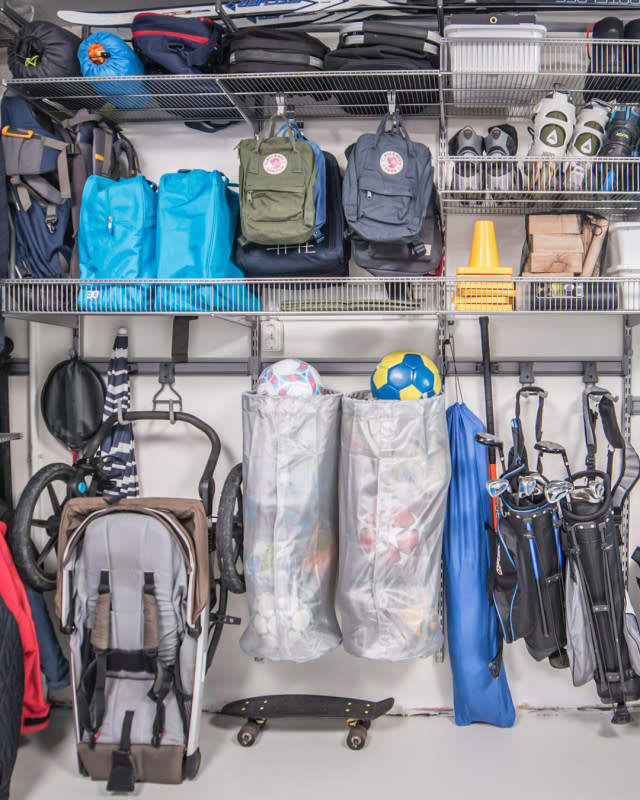
Elfa
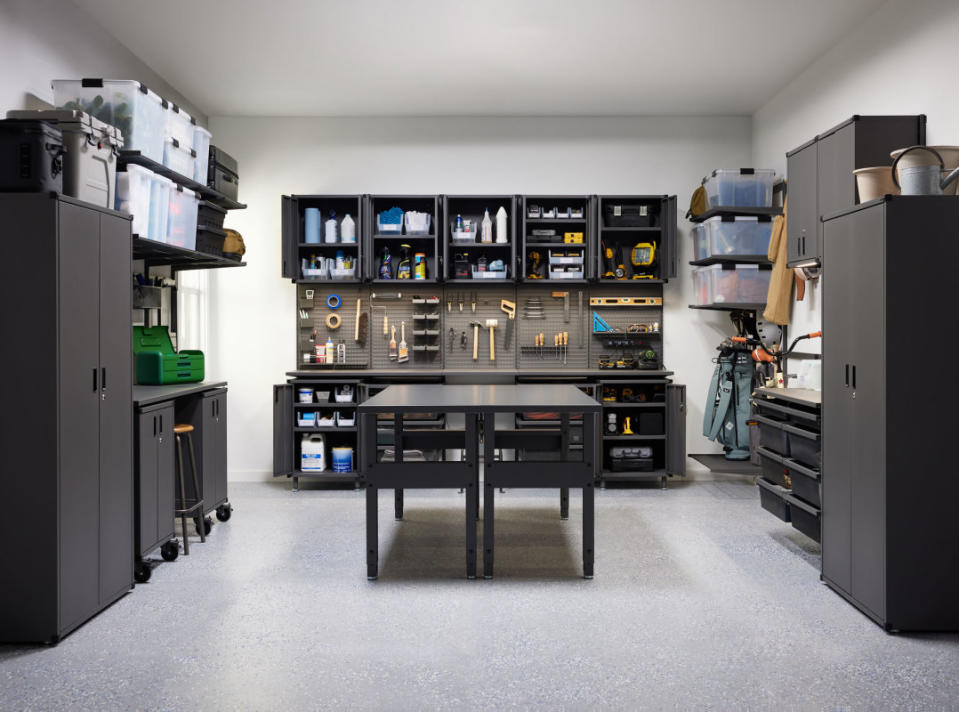
Elfa
4. Improve Storage Solutions
Keeping items off the floor is the real goal of any organized garage. Need garage storage ideas? These will help:
Maximize vertical space. Every square inch of wall space matters. Install shelving units, built-in cabinets on wall studs, wall-mounted hooks, hangers, or pegboards to take advantage of vertical space and keep garage items off the floor. Modular garage storage systems with cabinets or matching storage bins can be a great solution, and there are many on the market. If you need inspiration, check Garage+ by Elfa. We also really liked the RUX70 Essentials Set with its unique hook and rail system—the big storage totes unclip to become easy-to-transport bags.
Utilize overhead storage space. Install overhead racks or shelves to store bulky items. Yes, it can be great to have plastic storage bins with lids for things like holiday decor or sports equipment up high, but overhead bike racks are awesome, too. Making the most of overhead space will free up a lot of valuable floor space!
Keep heavier items low. No sense in trying to heave heavy items into overhead storage.
Label everything. There is no arguing the point that labeled boxes and bins are the best. Just remember to get it done before you forget what you put where.
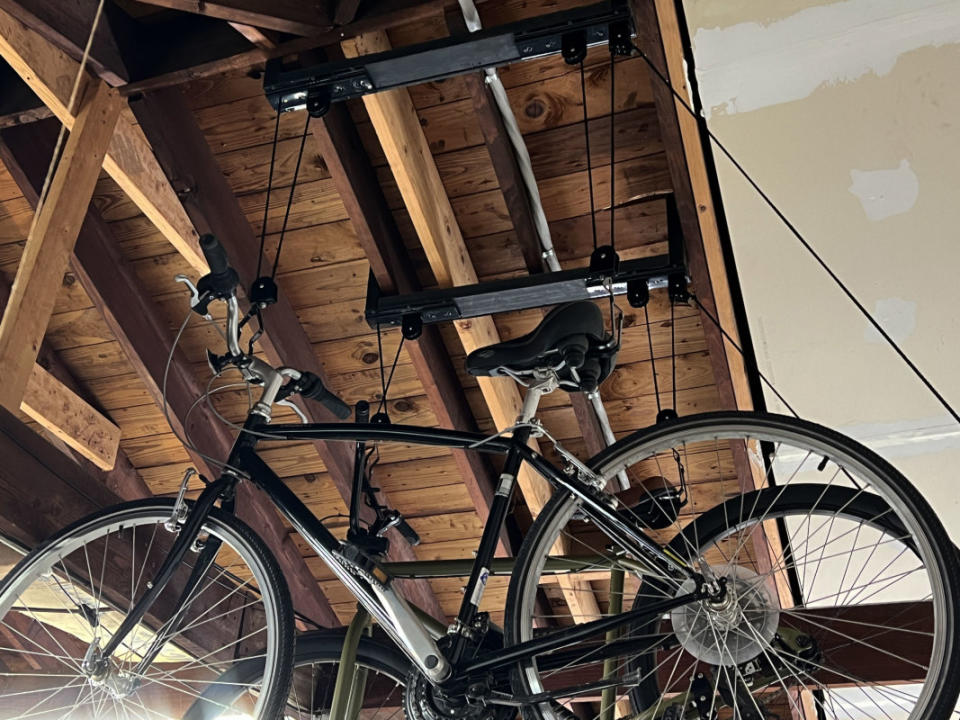
Emily Fazio
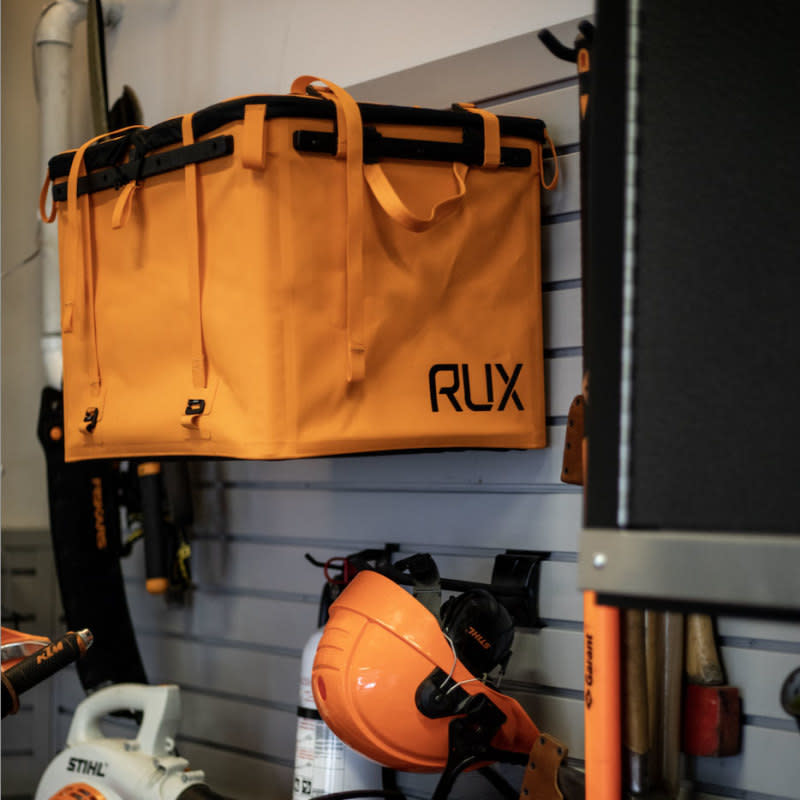
RUX
5. Re-Arrange Items By Category
Pro tip: Prioritize accessibility, whether it be access to your leaf blower or paint cans, but also clear extra room around your parking space. Place frequently used items within easy reach.
Group similar items and create zones. Arrange items in the garage by category. Dedicated zones around the entire garage can help organize different activities or types of items, such as your collection of tools, garden gear, or automotive storage.
Keep pathways clear. It's easy for main paths and doorways to become drop zones out of convenience or necessity, but let's break that. Make extra floor space around those areas to help them stay clear.
6. Regular Maintenance
Encourage household members to put items back where they belong
Give it a scan and make a plan. to declutter and reorganize as needed, particularly after seasonal changes or major projects.
Give it a scan and make a plan. when you realize you have duplicates or no longer have a need; avoid creating more clutter.
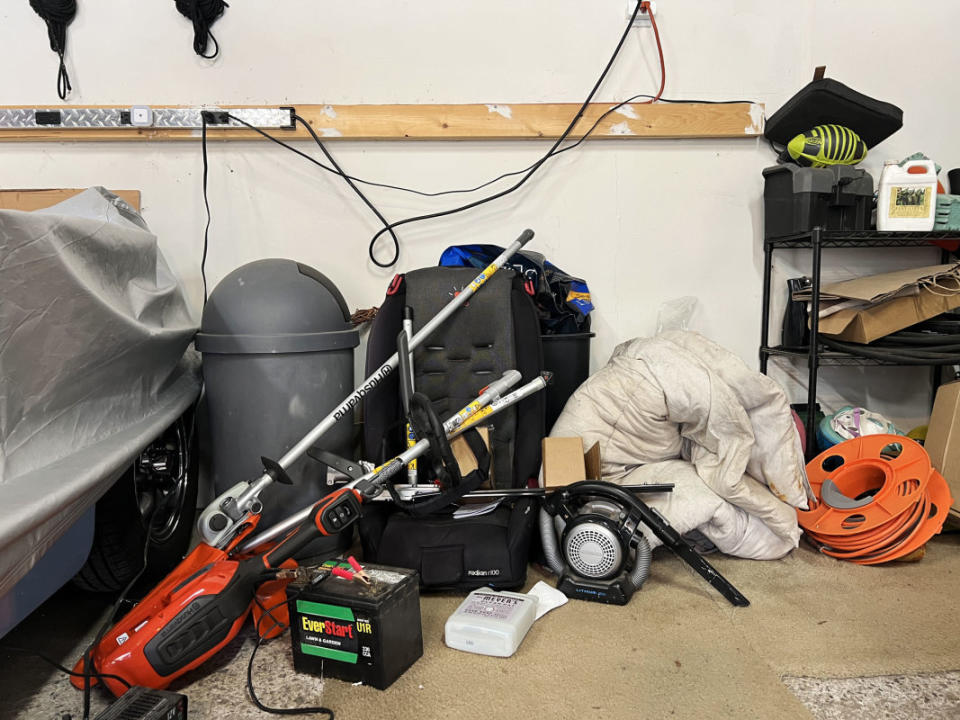
Emily Fazio
How can I protect items stored in my garage from moisture and pests?
To protect items stored in the garage from moisture and pests, consider using airtight, modular storage containers or bins, storing items on elevated shelves or racks, and using moisture-absorbing products such as silica gel packs. Also, seal any gaps or cracks in the garage walls or floor to prevent pests from entering, and consider using pest deterrents such as traps or repellents.
Related: How to Clean the Inside of Your Windshield
What should I do with hazardous materials or chemicals in my garage?
Dispose of hazardous materials or chemicals following local regulations and guidelines. Many municipalities offer hazardous waste collection events or facilities where you can safely dispose of items. Don't pour them down the drain. Don't toss them in the garbage.
Hazardous items include:
Paint cans
Pesticides
Fertilizers
Pool chemicals
Solvents
Gasoline or other fuels
Propane tanks
Automotive fluids (e.g., motor oil, antifreeze)
Batteries (e.g., car batteries, rechargeable batteries)
Cleaning supplies

